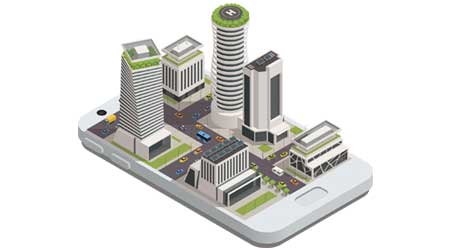Understand the BAS's Role in Facilities Management
The BAS should be used to proactively assist FMs in promoting a safe, productive, and efficient work environment.
The facility management industry has seen significant gains occurring in technology in the past few decades. One example is the migration from work orders tracked on a dry erase board to online service request submissions that auto-assign to appropriate craft or contractors while providing fluid feedback to the customer. Or consider the intricate pneumatic control systems that required hands-on monitoring and maintenance versus web-based controls that allow facility staff to remotely troubleshoot and tune building systems from anywhere using complex algorithms. And don’t forget the information recorded on the famed paper logs that can now be captured via mobile device during rounds, with alerts when a data point strays from the acceptable range and automatic work orders to ensure the issue is further investigated.
As much as there is to celebrate with how far facility technology has come, and with the future promising even more excitement, the harsh reality is that many organizations are stuck in a time warp. Much of this technology sits idle at our doorstep beckoning facility departments to embrace its robust capabilities. It is time to open that door.
Facility technology can be used to minimize, if not mitigate, many of the struggles with which facility organizations wrestle and help them grow and mature their programs to deliver recognized value at all levels.
BAS: Central Nervous System
Building automation systems (BAS), also known as building management systems (BMS) and energy management systems (EMS), or simply “building controls,” are the central nervous system of a facility. BAS deliver far more value than just alerting technicians when control points exceed alarm parameters or identifying the biggest fire to tackle that day. They play an essential role in managing occupant comfort, safety, and, ultimately, employee productivity.
For example, studies have found that for every one degree F that the ambient temperature runs outside the “comfort zone,” a worker’s productivity decreases by 4 percent; thus, for a building of 500 people, a two-degree slip could result in $4 million of lost productivity per year — just two degrees. A fiscal impact of this magnitude could justify further investment in expanding the focus of building controls to proactively manage indoor environmental quality and overall system performance.
As the name indicates, a robust EMS is essential to ensure facility systems operate optimally and efficiently. Algorithmic comparisons of data points, such as return air, make-up, mixed air, and supply air temperatures can quickly reveal when economizers are not operating correctly or dampers are leaking or not functional, or if a failed probe may be present; addressing issues like those can result in energy savings and improved indoor environmental quality.
The BAS also allows facility managers to expand maintenance strategies to include condition-based maintenance by incorporating data points that indicate when a system is not operating at peak performance or is trending toward failure, thus, requiring maintenance or corrective action. A simple example of using BAS for condition-based maintenance is monitoring the pressure drop across an air handler filter bank and issuing an alert when the filters need to be changed — not because it has been three months, but because the filters need to be changed. More sophisticated control points that may fall into condition-based maintenance or ongoing commissioning include monitoring amperage draw on motors, tighter control of building and relative space pressures, and chilled/heating water return temperatures.
In short, the BAS should not be limited to reactive troubleshooting or indicating failures; rather, BAS intelligence should be utilized to proactively assist building operators promote safe, productive, and efficient work environment. The best approach is to partner with a controls vendor and related industry experts to develop a controls strategy for realizing the full capabilities of the controls platform, then work with them to methodically implement and commission the plan. Use the small victories to justify larger investments and progress down your strategic plan.
Related Topics:











